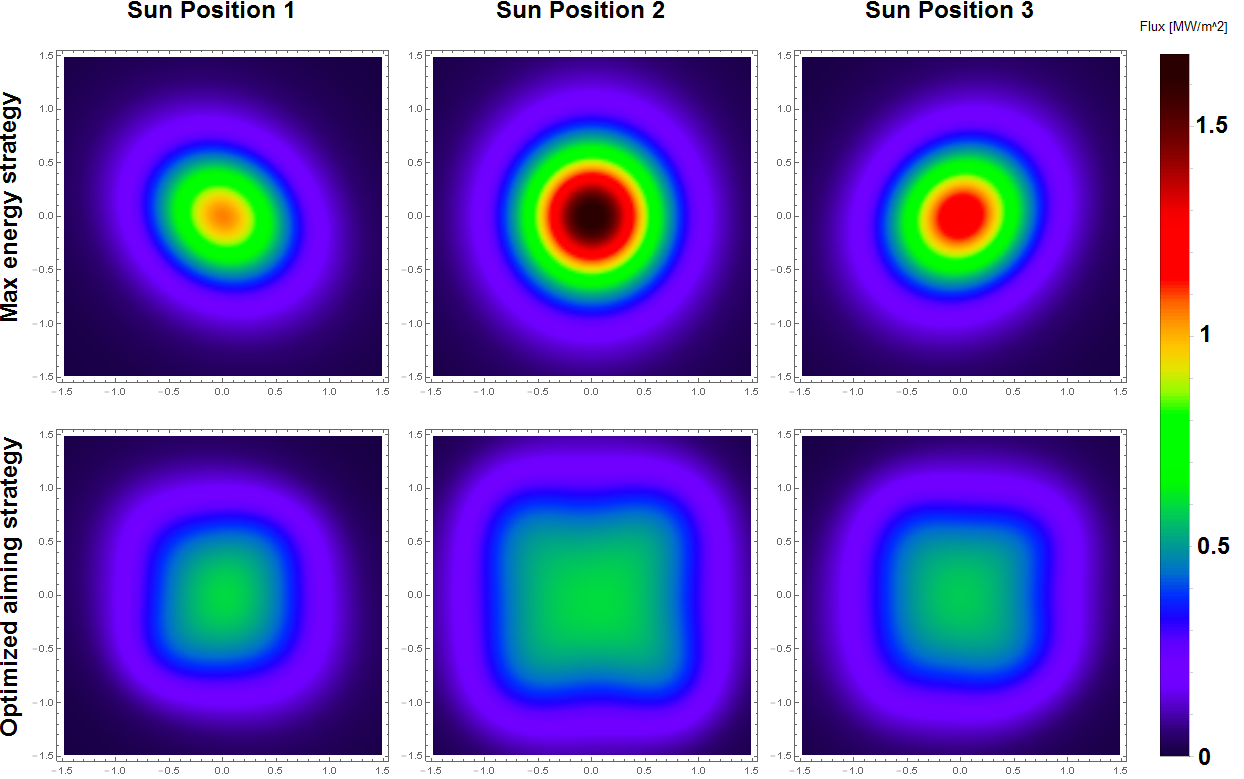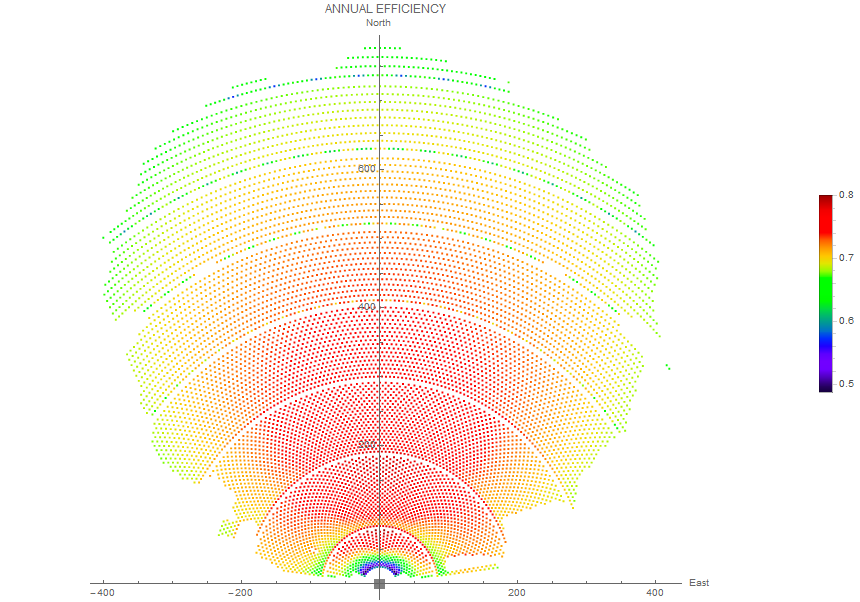Design and optimization tools for heliostat fields
Short description
CENER made a set of tools written in C++ specifically designed for fast evaluations of heliostat fields. To achieve that, the optical models are based on convolution theory. In addition, their accuracy are guaranteed and validated through the well-known ray-tracing software Tonatiuh.
The core of the code contains the equations and algorithms needed to calculate the optical efficiency for each heliostat, it means, the set of optical losses (cosine, shadows, absorption, blocking, atmospheric attenuation and spillage) that decrease the energy arrived at the receiver and enables obtaining the merit indexes commonly applied to heliostat fields such as efficiency matrix or annual efficiencies.
Main technical features
The models enable evaluating any heliostats field with different heliostat, tower and receiver shapes as well as environmental conditions such as atmospheric attenuation and sun shape models.
Convolution theory is applied to calculate heliostats efficiency. Also cosine, shadows, absorption, blocking, atmospheric attenuation and spillage losses can subtracted as detailed results.
Innovative aspects
Fast and accurate performance
Applications
The most popular applications are the following:
- Evaluation of heliostat field annual performance: Given a heliostat field, the software enables calculating the annual efficiency of each heliostat in each sun position and thus obtaining the overall annual efficiency. Besides, it is possible to calculate efficiency matrixes, if needed.
- Optimization of heliostat fields: Based on a genetic algorithm, it is possible to optimize the position of the heliostats in a solar field to maximize their performance. A publication following this methodology can be found in the reference: Mutuberria, A., Pascual, J., Guisado, M. V., & Mallor, F. (2015). Comparison of heliostat field layout design methodologies and impact on power plant efficiency. Energy Procedia, 69, 1360-1370.
- Calculation of flux map on the receiver: Detailed flux maps can be calculated for a given heliostat field and operation strategy.
- Optimization of aiming strategies: An optimization method based on Dijkstra’s algorithm obtains the corresponding aiming points of each heliostat that maximize the receiver input energy while keeping the peak flux under control.
Related documents
Image gallery
Type of partner sought
CompaniesTasks to be performed by the partner you are looking for.
We are looking for industrial wishing to design heliostats fields and their performance.

